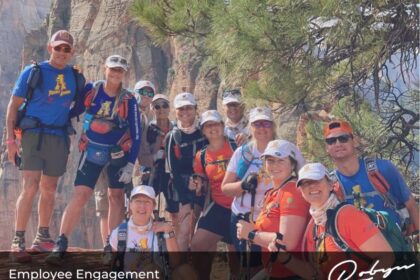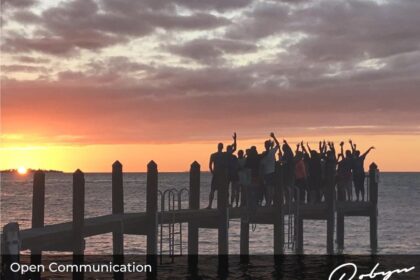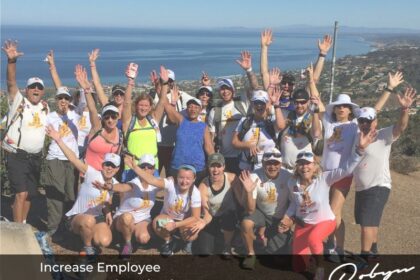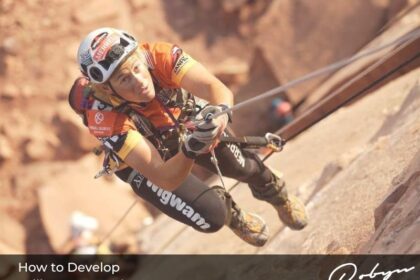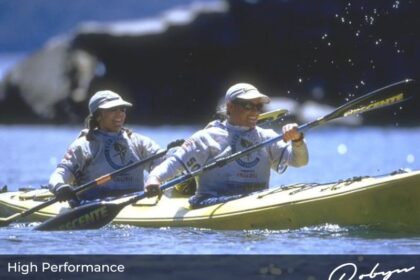A company is only as strong as its team. The teams that fall apart are the ones that leave the suffering wildebeests alone at the back of the pack and just go on without them, thinking that will make the lame ones go faster. Those teams form little cliques of faster people who end up ignoring or tolerating the slower people.
That’s not the way a world-class team operates. Winning teams—the ones comprised of folks who have achieved human synergy—stick together no matter what. They start, run, and finish the race as a team. They embrace whatever their weaknesses are at that moment and try to make life a little better for the ones who are falling behind.
So, what are the principles that drive organizational success? And how can we not only identify but fix dysfunctional behaviors in the workplace and create human synergy, that magic that makes us better together than any of us could ever be alone?
Finger-Pointing Never Takes a Team to the Finish Line
Whenever we saw a team in which there was finger-pointing at one another, we knew that particular team was never going to make it to the finish line no matter how great the individual members were as athletes. Toxic behavior and rumblings like, “I don’t think Bob trained enough. He’s been lying to us the whole time” or “Steve really blew the navigation in that section” give the signal that individuals will be thrown under the bus on this team, so it’s every man or woman for him or herself. If this pointing out of individual weaknesses or mistakes continues, especially in public, you can wave goodbye to a healthy work culture and the desire to work for your teammates versus protecting yourself from them.
To that end, a strong culture is one where teams word everything as we: “We lost our way.” “We struggled in that section.” “We lost the account.” The people who are responsible feel bad enough already. And more than likely, they know who they are. They will appreciate you having their back, and in the future, when the shoe is on the other foot, they will have yours. What happens on the team stays on the team. This grace and generosity of spirit is the glue that holds a team together over the long haul.
A vital element of an unbreakable work culture: Your problems = My Problems
A great leader understands that on a We Thinking team, all problems are our problems. All success is our success. All failure is our failure. Along those same lines, you will rarely hear, “That’s not my job” or “That’s not my problem” from the world’s best. Although you may have had nothing to do with an issue that befalls a teammate, in adventure racing their problem is your problem because you can’t progress to the finish line without them. In the real world, we can definitely move forward on our course without helping one another.
But as solo players, we can’t match the outcomes that a great team can accomplish together. A good deal of that success has to do with not only sharing strengths but also, most importantly, sharing the good, the bad, and the not so pretty circumstances that each individual is enduring.
Understand That Every Human Interaction is a Clash of Realities
Part of empathy and awareness of teammates (the 2nd of the 8 Essential Elements of Human Synergy) is the ability to put yourself in one another’s shoes. We are all very much in our own heads most of the day, working out problems, working on goals, on a mission…so when we interact with others on our day’s journey, it’s important to realize that the other person may have a completely different goal, agenda, recent experience that they are bringing to the table. This is the potential clash. One brain dump versus another. 🙂 It’s an important life skill to seek to understand first – and to be understood second.
For example, when we race, my teammates and I are in our own universe, hauling butt at top speed, trying to win. Our ground crew, on the other hand, would just pull up from driving for up to 2 days to meet us with food and gear, and they would have a plan for how they thought the “transition area” should be run. They would have everything all set up based on their game plan for us, then we would rush in and with our own game plan for the transition and end up feverishly asking all kinds of questions and reworking their plan based on our own plan and the entire transition would be a mess of conflicting goals and means.
After one race, my boyfriend and ground crew member, Jeff, and I had it out. And we came to the conclusion that when my team arrived next time, we would all stop and LISTEN to his plan for us before we were allowed to do anything or ask any questions. That worked a hell of a lot better.
We were coming from two different realities when we would meet – a team of racers who had been in our own bubble for days, and a crew that had their ear to the ground and knew a lot about the course ahead and how to be successful. Yet we did a terrible job of listening to one another and having the respect to give the other party the floor. We all want to be understood – but I believe we get a LOT more out of an interaction and build better connections when we seek to understand first!
The bottom line when it comes to correcting a dysfunctional team culture is every team member making a commitment to leave their egos at the front door, to shut down gossip, to be graceful when another teammate fails to meet expectations (as they will then be when you inevitably are in the same boat), and to BE the kind of teammate or leader they’d want to work with and work FOR. When you create that kind of synergy-producing, healthy culture, in which every employee feels accepted and respected, you can choose and accomplish bigger goals than any individual, or even group of individuals, could ever achieve alone.

